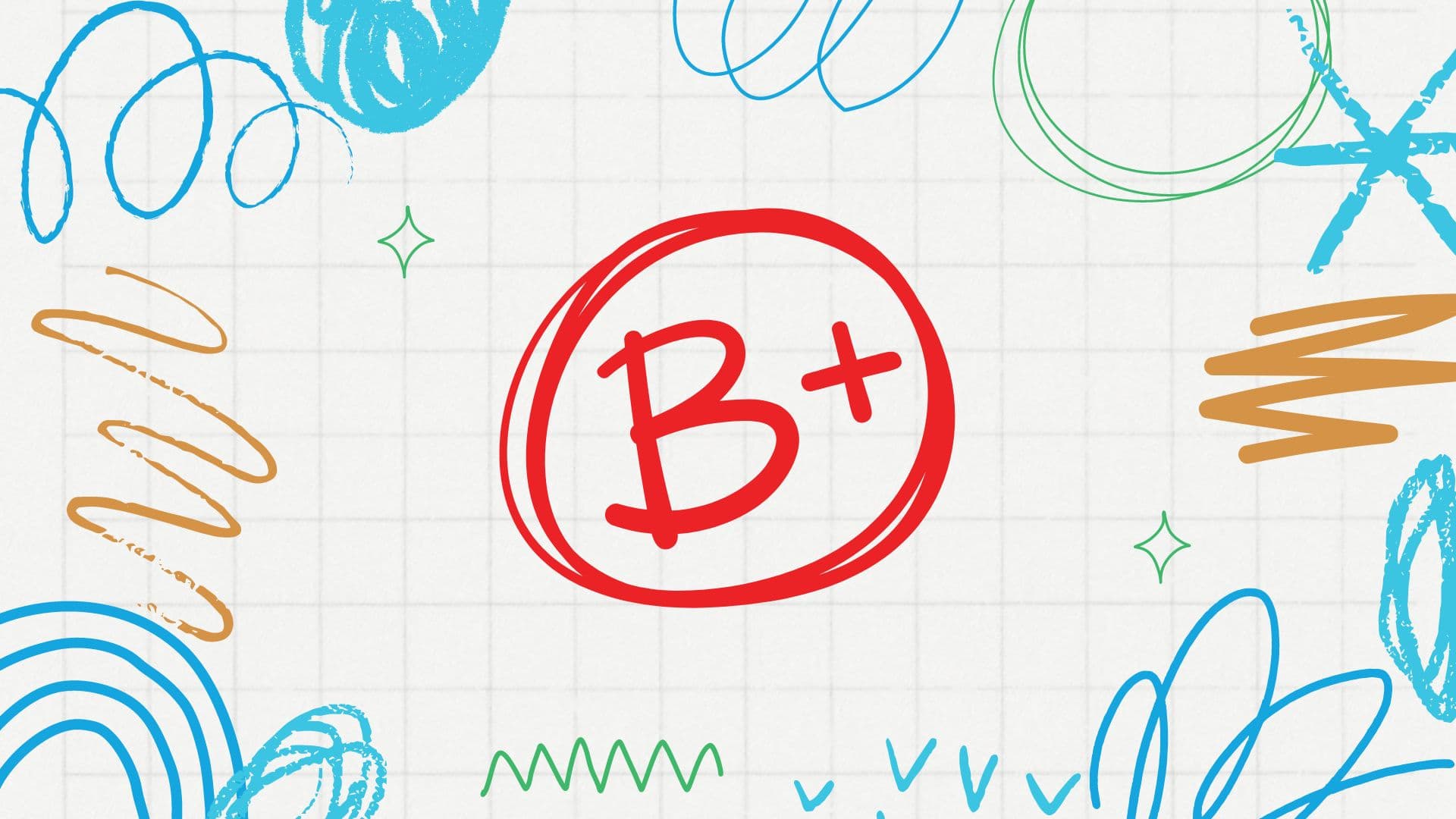
So, college applications are right around the corner and you’re not exactly sure what to do? Well, don’t worry – we’re here to help. We explain how to get into college, even if you have a low GPA.
Let’s take a quick look at what you can do to get into college.

To create an effective admissions strategy,let’s go over how the college admission process works.
First and foremost, you should take some time to really think about what school you want to go to and why. Start by honestly answering these questions:
Regardless of your preferences, getting into a great college can is often a selective and competitive process. So, make sure you check the admission rates for the college you want to apply for, and don’t forget to apply for one or more “safe” schools that are more likely to admit you.
Once you have some honest answers to the questions above, you’ll start to have an idea of what schools to apply to. Soon, it’ll be time to send out those college applications.
The first thing you should get on top of is where you want to apply. There are plenty of schools to send your application to, but it’s important to know that the school is a good fit for you. Like we mentioned above, you can base this on a number of factors such as cost, location, culture, and the programs they offer. If you don’t know where to apply, you can always talk to alumni, college students, or your college advisor for help. You can even go to college fairs to see what these colleges offer for yourself.
There’s also many lists of colleges that you can find online. We’ve even made a few of our own:
If you haven’t already, you should collect all the necessary documents related to your qualification. Fortunately for you, there are great tools to help you retrieve this information and keep it organized.
The Common App is the golden standard of efficiency among college application tools. You can store all the information you need on it and then use it to smoothly apply to the colleges you’re aiming for. While we’ve
You’ll be needing your high school transcript, which is an official record of all the courses you took and the grades you got from them, plus any GED program you attended.
If you have recommendations from teachers and guidance counselors, send them too. If you don’t have any, you can always speak to them for a recommendation. Finally, make sure to write and submit your personal essay. Personal essays are a great way of expressing who you are as a person outside of school. Your essay should explain why you’re applying, what are your goals, and why you are a good fit for their college.
Most colleges require you to submit either ACT or SAT scores. These scores are often used to assess college readiness, class standing or placement, and in some cases eligibility for scholarships. Depending on the institution, chosen major, and courses taken in high school, you may also need to take SAT Subject Tests and/or Advanced Placement exams. Don’t forget, you can always retake these tests if you don’t like your scores.
When applying for college you should consider when you want to apply since there are a few deadlines to keep in mind. Colleges and universities typically use one, or more, of the following application deadlines:
Once that’s done, you can start sending your college application to the college of your choice. But college applications can get a bit pricey, especially if you’re applying to several schools. Most Institutions require an application fee. If you can’t afford to pay for it, try to take advantage of the waiver fees many colleges offer – these waivers will vary school to school.

The most important way to stand out is obvious: you should get good grades. Having good grades is the most straightforward way you can get noticed in your college admissions and there’s a good reason for why.
Having good grades is one of the most important factors for your admission into college, even more so if you have good grades in a challenging course. Your grades are a showcase of your academic skills throughout the years. It’s a testament to your dedication, tenacity, and improvement throughout your high school years. Basically, if getting good grades gets your foot in the door then you better shine those shoes to make yourself really stand out.
But what can you do if you have a low GPA? Can you even get into college with bad grades in high school? Short answer, yes. Here’s how:
If there’s been a significant drop in your grades, own up to it and explain why. Most applications give you space to explain why your academic performance might have suffered. There are plenty of reasons for why a student might get bad grades, such as family issues, illness, stress, a lack of maturity, or even an abrupt change in teachers.
Regardless, admission officers know that grades by themselves don’t define a student’s capabilities. With that in mind, you should write an honest explanation for why your grades are the way they are,especially if the reason for it is COVID-19.
You can explain your reasons in a personal statement or in the additional information field on the Common Application sheet.
As mentioned before, essays are a great way to show who you are as a person and why you are a good fit for their college. In your essay, you can explain who you are, who you aspire to be, why you chose their school, and more.
But you don’t want to just answer questions in your essay or personal statement – you need to write a story. Show what kind of person you are and what you’re capable of by writing about your achievements, your goals, your failures, and what lessons you learned from those failures.
Tell them a story only you can tell, share your proudest moments, how you overcame challenges, and what your values are as a person. While grades are an important metric of performance, they won’t tell admissions officials your true story.
A good rule of thumb is this. If one of your close friends reads your essay and can’t tell that it’s you who wrote it, it’s not personal enough.
Your essays are the only part of your application that you have complete control over.
Higher SAT and ACT scores won’t cancel out a low GPA. But, they can go a long way in improving your chances. Alongside good recommendations and references, higher test scores can be a good way of showing how well you can do in college
If you have a low GPA, it’s not too late to dramatically improve your acceptance changes with a good SAT or ACT score. We recommend investing in an ACT prep course with a study guide to help you improve your scores. Achievable’s ACT course is a great option, you can get started for free to see if you like it.
If you’re applying to top colleges, like the Ivy League colleges, high test scores are a must. A competitive ACT score (or SAT) will go a long way to helping you stand out amongst your peers.
Memorable references and recommendations from high school counselors and teachers can be a game changer for college admissions. Recommendations serve as an important testament to your ability to do college-level work, your dedication, and your overall character from a teacher, advisor, or counselor’s perspective.
Recommendation letters can be vital to your college application. They communicate a lot of revealing information about you to admissions officers, and showcase your personality, talents, and achievements. Admissions officers are typically looking for students with impressive academic, personal, and social skills who will succeed in college and beyond. Having a teacher or counselor put in a good word for you can help tip the scales just a little to improve your chances of getting into college. Lastly, when you’re applying to small private colleges or schools with “holistic” admissions philosophies, their admissions team are more likely to take a closer look at your application.
You can ensure you have a great letter of recommendation by doing three things:
Start your recommendation letters early and give ample time for your writer to complete them (rushed letters are a bigger favor, and they turn out worse)
Ask your writer in person (then send an email with instructions)
Suggest to your recommendation writer what qualities you’d like them to highlight
The last thing you want is for your teacher or counselor to rush your recommendation letter. So, it’s best to ask them to write your letter early, preferably at the beginning of the summer. Whoever you ask to write it, you’re likely not the only person asking them. In fact, some teachers have as many as a dozen students asking for recommendation letters at once. Do yourself a favor and ask for your recommendation letters well in advance, so that you’re in the front of the line.
Next, when you ask someone to write your letter, it’s best to do it in person. We recommend students ask right before summer break so teachers have the most time to prepare and it is during an off period for them.
After you get confirmation in person, email them promptly with more instructions. Teachers will appreciate this because they’re often grading or administering their finals at the end of the year, and won’t necessarily remember your ask if you email them two weeks later. In this email, let your recommendation writer know what to highlight in their letter. Give them a few bullets or ideas – as a rule of thumb, the more personal the better. Have them share a story about you that illustrates a great quality you possess that meshes with the rest of your application strategy. You want your recommendation writer to share something about you that shows your best qualities and is an engaging story. This ensures your letter of recommendation will be memorable.
If you do this, you’ll be leaps and bounds ahead of other applicants without strong letters. Letters really show your character and give people a chance to make you human in an otherwise impersonal process.
Whether your grades are high or low, you’ll also want to show your passions and talents in other ways. Take extracurriculars and extra courses to really show who you are and what you can do inside and outside of the classroom. Having AP, Honors, and IB Courses are excellent choices;they are fairly standard and so it is easy for colleges to recognize your achievements..
You can even do impressive projects with student organizations, engage in creative pursuits, or pursue internships. We also recommend joining or taking leadership positions in these clubs and projects whenever it is a good fit for you. By taking other projects and extracurriculars outside of school, you can really impress admission officials and show them what value you could bring to the university.

Once you’ve finished all the work you need to do to apply for college, it’s time to wait. While this might seem like the perfect time to relax, waiting for results can be the most nerve-wracking part of the admissions process.
But knowing is half the battle. To help you alleviate some of those worries, here’s a quick explanation of how application results are sent out.
Early Decision lets you submit your application around November and get your decision by December. While Early Decision deadlines have a similar timeline to Early Action, there’s one huge difference: they are binding. This means by applying to a school Early Decision, you are agreeing to enroll if you are admitted. When this happens, you have to contact any other colleges you applied to and withdraw your applications.
Early Action is a non-binding agreement. With Early Action, you’ll submit your application around November and usually get your decision by December. But since you’re not bound to this application you can still apply to other schools Early Action. With this option, you won’t have to commit to a school if you’re admitted.
Single Choice Early Action is a non-binding exclusive deadline. Similar to Early Action deadlines it’s not binding. The only difference is that you can only apply to one school in this way. Not many schools offer this option, but for those that do, it shows that you’re interested in attending the institution which may increase your chances of being admitted.
This is a standard decision with no complicated twists. Regular decisions are non-binding and widely available. Regular Decision deadlines for fall admission usually occur in the preceding January or February, and students will receive a decision often by April.
Rolling admission deadlines are non-binding and schools with this deadline will accept applications until their programs fill up. This can often go on as late as April and through the summer. But, if the class fills up, you lose your spot and miss out on scholarship opportunities, so try not to wait too long. When it comes to a school with Rolling Decisions, it’s recommended that you apply on the same timeline as people applying for Regular Decision deadlines.
There’s more to college than just sending an application. As you can see, it takes a lot of prep work, planning, and research. Taking the time to understand how the admission process works can help point you in the right direction. Most importantly, start early, have a strategy, and make sure that strategy is thoroughly researched and feasible with your budget and time. With that, good luck on your application!

We’ve tracked down the acceptance rates of some of the easiest colleges to apply for in the country, so you don’t have to. With special sections for CA, FL, TX, and NY. Read on to find out more.

Do you have a 3.5 GPA? Are you curious about which schools you have a good chance of getting into with a 3.5 GPA? There are numerous options from prestigious institutions to high-ranked liberal arts colleges. The opportunities are endless and in this blog, we will explore these colleges and universities, explore strategies on how …

If you’ve always been fascinated by the mysteries of the ocean and dream of exploring marine ecosystems, a career in marine biology might be perfect for you. Studying marine biology offers the unique opportunity to observe animal behaviors, understand the health of our oceans, and explore the connections between humans and marine life. Graduates can …